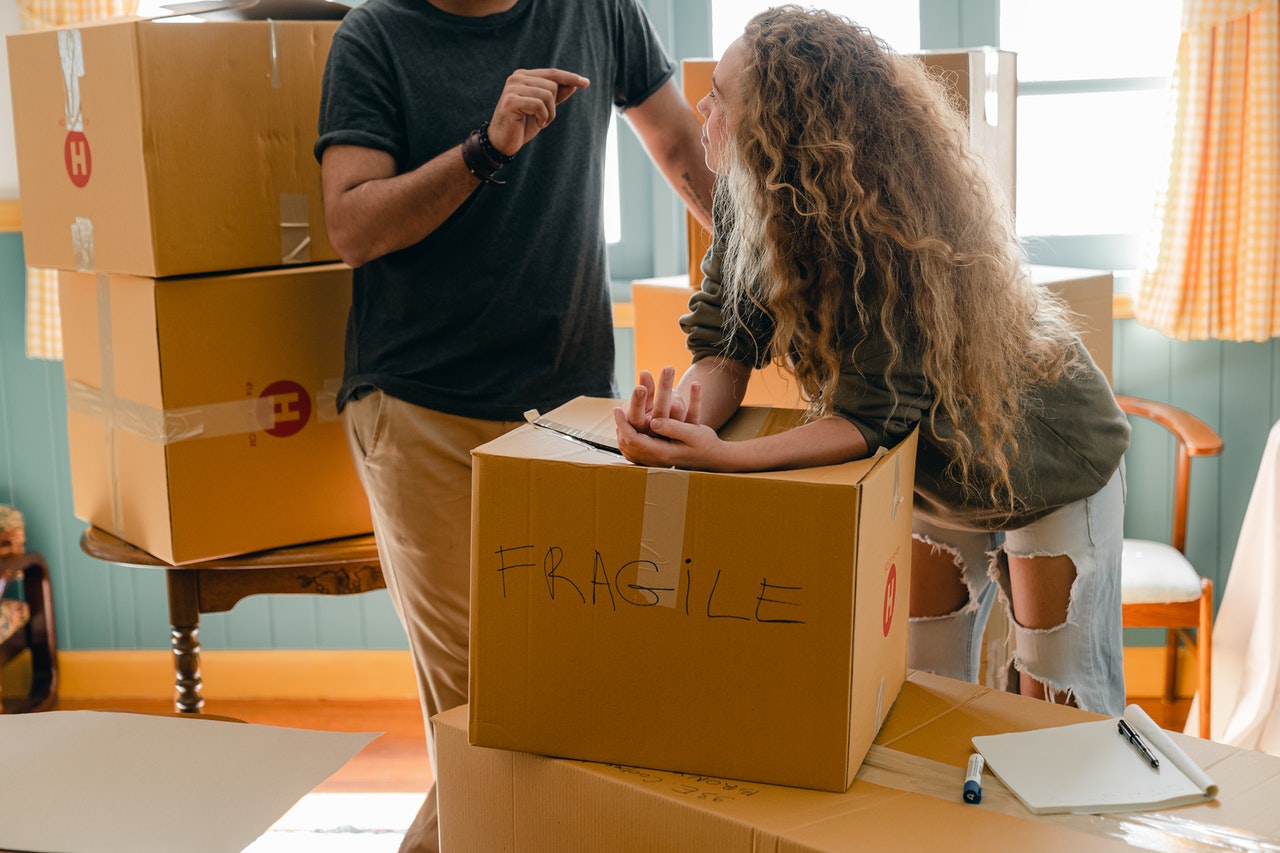Hit enter to search or ESC to close
How to Stay Organized When Moving: Ultimate Moving Guide

Without a doubt, you’ve heard that the secret to success is an effective organization. This is especially true when moving house – there are so many vital things to take care of and challenging jobs to do before moving day that you’ll be utterly at a loss for what to do if you don’t have a strong organization. However, no matter how well-planned your move is, it won’t be enough to assure a smooth and trouble-free transfer unless you can keep it organized throughout the process.
But how to stay organized when moving? The only way to retain your sanity in the middle of a flurry of intertwined moving-related tasks is to create a trustworthy plan of action and adhere to it no matter what.
It will be much easier to build an effective relocation strategy if you can see the big picture — imagine your new house and walk through all of the phases of the moving process in your imagination. If not, you can benefit from our helpful hints on how to be ready for a move:
Make a timeline that moves
You’ll need some solid rules to turn to anytime you lose your focus or anxiety throughout your traveling journey to keep everything under control. When your impending relocation becomes a reality, the first thing you should do is construct a precise moving timetable to help you plan your duties and track your progress.
Make sure your tailored to-do list includes all of the chores that must be completed before moving day, that you rank them according to their relevance and complexity, and that you establish applicable deadlines for each activity. This way, you’ll know exactly what has to be done for the day and will be able to focus on one task at a time. As a result, you won’t be overwhelmed by the scope of the relocation, you won’t miss critical details, and you’ll be able to keep focused and motivated at all times.
Make a floor layout for your future residence
Once you’ve discovered a suitable new house in your new neighborhood for you and your family, you’ll be able to envision your future life and make an educated choice about your relocation – what to bring and what to leave behind.
If you develop a thorough floor plan of your new property, it will be much simpler to figure out which of your old goods you will be able to utilize in your new surroundings and which of them will fit in the available space. As an extra plus, you won’t spend time on move-in day because you’ll know what goes where and can guide the movers to deliver your belongings to their proper locations.
Make a moving inventory list
Your moving inventory sheet, yet another essential reference list, will help you organize your items and keep track of them during the moving process. It will assist you in determining the type and amount of packing materials you’ll require, as well as determining how long it will take you to pack your stuff (the movers will offer you a pricing estimate based on your inventory sheet – the number of items on the list and their total weight). Furthermore, your inventory list will act as both a packing list (to ensure you don’t forget anything) and confirmation of the condition of your possessions prior to the relocation.
Get rid of unneeded goods as soon as possible
Once you’ve set aside the goods you won’t be taking with you to your new home, you’ll need to get rid of them as soon as possible, or they’ll clutter your space and add to the moving mayhem. Furthermore, the closer moving day approaches, the less time and energy you’ll have to cope with internet sales, garage sales, charity contributions, and other such activities. Not to mention that if you have had an item for a long time, you may change your mind and opt to take it with you out of nostalgia or just because you are unsure what to do with it.
Separate regions of your home should be used for different reasons
To limit the risks of your belongings becoming mixed up while preparing for a move, establish separate storage locations for different kinds of objects and maintain everything in its proper place:
goods to be sold, donated, or given away; non-allowable items that your movers will not load into the moving truck for safety reasons; pre-packed moving boxes; items to be used up before moving day; items to be packed in your necessities box; and so on.
Logically organize your belongings
Create a reasonable and realistic packing schedule as follows:
Prioritize your packing activities and establish appropriate dates for them to be completed; make sure you know where to begin packing and what to pack last, so you don’t end up opening previously sealed boxes because an item put within is needed.
To keep track of your progress and avoid becoming overwhelmed by the vastness of the packing project, break down each large packing chore into readily manageable mini-goals.
Pack your belongings by kind, destination room, or any other criteria that make sense to you (it’s natural to group comparable items, but you can have a different goal in mind while packing a box – for example, keep all the contents of your desk drawer together).
Sort the boxes by color
When relocating, proper labeling is critical for keeping things organized. Of course, the more information the labels provide, the better, but you must be able to determine where a box belongs at a look. The quickest and most straightforward method is to pick one color for each room and label all boxes containing goods from that room with that color (you can use colored markers or tape).
Make a survival kit
Having the most critical goods packed together in one box can come in helpful during the busiest times of your move:
It will enable you to complete the final moving preparations on move-out day quickly and efficiently; it will assist you in surviving for a period of time without the rest of your belongings, and it will significantly simplify things on move-in day (you will have access to everything you need to prepare a quick meal, shower, get a good night’s rest, begin unpacking, and so on).
Take a lot of photos
When it comes to relocating, this is legal advice. However, taking photographs of your last house and prized possessions before you begin packing (as well as throughout the packing process) will serve a number of purposes:
Help you maintain vivid recollections of your past life by providing proof regarding the state of your possessions.
If you choose, we may assist you with redoing your interior décor.
Provide you with visual assistance that will help you to quickly and efficiently reassemble furniture pieces and reconnect cords;
Assist you in keeping things organized logically and practically.
Prepare ahead of time by gathering and organizing your paperwork.
Having all of your essential documents in order can assist you in staying organized and in control before and after your move:
All of your documents will be with you;
Soon after the relocation, you’ll have all of the medical documents, school records, bank records, and other crucial paperwork you’ll need;
You’ll have simple access to any moving-related papers, allowing you to ensure that everything goes according to plan.
On move-in day, the utilities in your new home will be turned on.
Your address will be updated, allowing you to update all of your important papers (voter registration, automobile registration, driver’s license, insurance policies, and so on) and have your mail forwarded to your new location.
Keep a list of phone numbers and addresses handy
Make a list of all the addresses and phone numbers you’ll need during the move, including your moving company, the hotel you’ll be staying in on your route to your new house, vehicle services, medical facilities, emergency numbers, friends, and family, and so on. Because your communication device may run out of charge or get broken, have them saved in your phone as well as written on paper.
Prepare multiple tiny map printouts showing the path to your new house – one to take with you (just in case), one to give to the movers, one to leave with the new tenants of your old home, and so on.
Maintain your concentration
Last but not least, maintain your concentration. The entire relocating procedure will go like clockwork – effortlessly and without any hassles – if you manage your time wisely and maintain a high level of attention. To accomplish this astounding achievement, all that is required is self-discipline and determination. Prevent procrastination and minimize distractions to avoid wasting time and losing motivation.
Conclusion
So how to stay organized when moving? Planning is the most incredible way to keep organized when relocating. You’ll never get lost in the maelstrom of moving activities if you make informed judgments about each phase of the process and stick to them.
